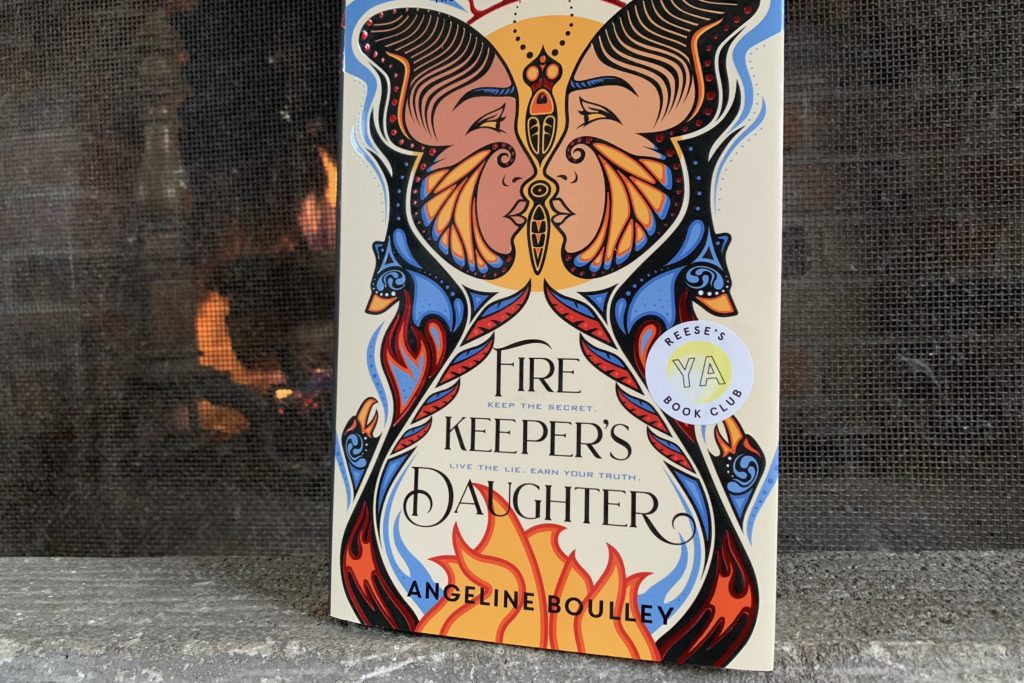A highlight of being a head of school for me is swapping titles with other heads who love to read as much as I do. Reading offers inspiration, respite and, every so often, an escape into another world, rendered so completely that I feel startled when I re-emerge and find myself surrounded by the four walls of my home. Such was the case this fall when a head of school pal in Toronto tweeted about Angeline Boulley’s Firekeeper’s Daughter. While this novel is billed as YA, the only thing that makes it YA in my opinion is a young female heroine, Daunis Fontaine. As an English teacher, I think a lot about how to be certain the people of color in the literature of our syllabi are not portrayed as victims but as the heroes of their own stories. Daunis is a gutsy girl, a runner, a recent high school graduate with plans to study medicine at the University of Michigan, and a deep commitment both to her Ojibwe roots and to her white grandmother who lives in an eldercare facility.
Now here’s the tricky bit about writing a review of a thriller. If I say too much, I’ll give away the plot, which is full of twists and kept me reading until I’d finished, despite a pile of ungraded papers that required my attention. But if I say too little, you won’t understand what a terrific read this is.
The action of Firekeeper’s Daughter is launched with the unexpected death of Daunis’ uncle. A high school chemistry teacher at Daunis’ and her half-brother Levi’s school, Uncle David was a meticulous observer, encouraging Daunis’ love of science and her dreams. This tragedy and another early in the novel compel Daunis to remain in Sault Ste. Marie to support her grieving mother.
An FBI investigation about drugs and the damage they do in communities like the one where Daunis lives has an important role in the story. There is a lot of ice hockey culture, a love story, and a little sex. There are villains—several, actually, and a sexual assault which could have broken Daunis, but doesn’t. The Saulte St. Marie community comes alive in Boulley’s deft hands. There is family tension and tested loyalties. There is more death—and Daunis’ ensuing grief and sense of responsibility are exquisitely rendered.
The world Boulley creates is in Northern Michigan, a place unfamiliar to me beyond my Michigan-born husband’s casual references to the UP (Upper Peninsula). Boulley evokes Daunis’ daily life with specificity and wonderful sensory detail—the early morning runs in the cold, the obsessive ice hockey culture, the clash between Western ways and traditional ways. As a reader, I felt invited to participate in the life of the community. Boulley herself calls Sugar Island home. She is an enrolled member of the Sault Ste. Marie Tribe of Chippewa Indians writing about her Ojibwe community in the UP and sharing the landscape of her own girlhood with confident expertise.
As a girl, Boulley relished Nancy Drew stories, so she wrote her own featuring a Nancy Drew she recognized. Boulley draws Daunis’ daily life— the blessings she offers, the rituals she follows—expertly, so that when the plot accelerates, we stay with her. We know Daunis and trust her as a narrator. She is trying to figure out where she fits in the world; we root for her on this perilous journey in which she discovers heartbreaking information about those closest to her and the horror meth can wreak in a community.
Boulley explains in her author’s note that she wrote the novel because there are too few stories told about contemporary Native Americans, who “exist and have dynamic experiences beyond history books or stories set long ago.” Boulley acknowledges violence against Native women as true and ongoing: “More than four in five (84%) Native women have experienced sexual violence. Nearly all (97%) of the Native women who have experienced violence had at least one non-Native perpetrator.” A great storyteller, Boulley does not focus solely on violence and horror. She also describes joy and justice and family bonds and ceremonies and traditional teachings and culture. Flames can both destroy and nurture; there is nuance in fire.
What I find myself thinking about several months after I finished the book are Daunis’ efforts to appreciate and learn the old ways from her elders even as she moves forward in a modern life. It is she who seeks out wisdom, she who asks questions and is wise enough to listen closely. Certainly, the old ways help her to unravel the mystery central to the plot, but Daunis made me curious about indigenous women today—their lived experiences, their ability to navigate two worlds. It’s clear that belonging to the tribe is important to Daunis, but being enrolled brings with it new obligations and dangers. Her mother is not Ojibwe, but her father—dead before the story begins—is. She is literally raised between two worlds. To be the Fire Keeper in the Ojibwe means to keep the ceremonial fire going to honor the dead, to mark rituals. By the end of the story, Daunis claims her own inheritance as her father’s daughter. She is the Firekeeper’s daughter. She belongs.
I was moved by this book. As we seek to correct false narratives and stereotypical caricatures of people whose experiences are unfamiliar to white readers, I hope you will add this novel to the collection of a young woman you cherish. Daunis is resilient, vulnerable, human. I am crossing my fingers that Boulley will continue to write and give us more characters like Daunis.

